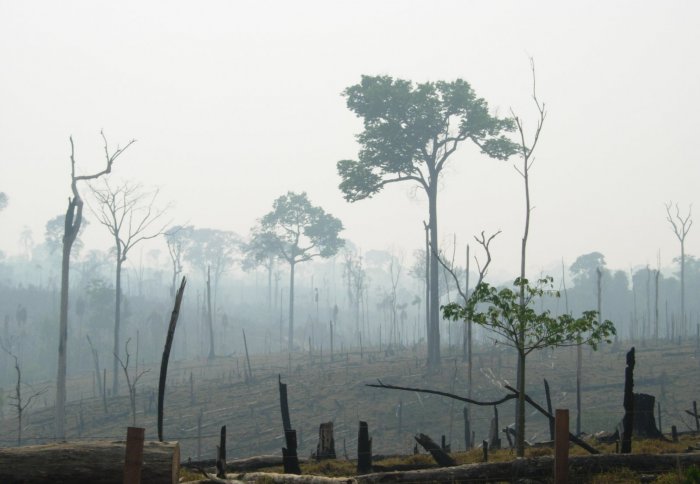Low extinction rate disguises pending Amazon catastrophe
by Simon Levey

Burnt rainforest scene in Novo Progresso, Brazil
Discrepancy between extinction rates and reality is disguising a catastrophic decline in the Amazon
by Simon Levey
Monday 16 July 2012
A discrepancy exists between the number of animal species reported extinct and the reality of population numbers on the ground, which is disguising a catastrophic decline in biodiversity in the Amazon rainforest, according to new research published in the journal Science.
See also:
Related news stories:
No animal species have been confirmed extinct in the Brazilian Amazon during the last forty years, despite high rates of deforestation in the region, but the authors of the new study say this masks the critical condition of many species, many of whom don't have enough remaining habitat to survive long term.
The scientists from Imperial College London say the difference between the number of species that models predict should be extinct and the number in reality, a figure termed extinction debt, is set to increase in line with global extinctions to the year 2050 and beyond if deforestation continues at present levels.
They developed a new model that assessed the link between? historical patterns of deforestation to extinction rates in the future, and compared their model outputs to data on global populations of endangered animals and with data collected at a local level in the rainforest. The results showed that while many species were not considered to be extinct at a global level, they had completely disappeared from many individual regions, creating gaps in local biodiversity.
Previous predictions suggest that between four and ten animal species should have gone extinct from the whole Brazilian Amazon, but none have yet been confirmed. In this study, the scientists examined data from the region and found that if deforestation continues as per the current situation over the next forty years, it would cause around ten extinctions per 2500 kilometre square area, with an additional extinction debt of nearly 27 species.
The scientists further predicted that if the Brazilian government introduces severe measures to manage deforestation now, some of these species can recover from near-extinction and drastically reduce extinction debt in many areas. They say that by 2050 this could be reduced by between one and two-thirds, to around six extinctions per 2500 kilometre square, with an extinction debt of only ten species.
Dr Rob Ewers, Senior Lecturer in the Department of Life Sciences, and lead author of the research, said: "Tropical deforestation condemns huge numbers of species to extinction, but that extinction can take decades to materialise as the last individuals of doomed populations slowly die off.? This time lag means extinctions over the last 40 years pale into insignificance compared to those expected to occur in the coming 40 years.
"The Brazilian Amazon could make it to 2050 having lost just five per cent of its native large animal species if current levels of conservation action are maintained.? However present-day changes to the national Forest Code will ease requirements for landowners to protect forests on private land and new legislation currently being debated threatens to cause an increase in the rate of deforestation. The impacts of this on biodiversity will be felt decades into the future."
This research was carried out thanks to funding from the UK's Natural Environment Research Council (NERC) and the European Research Council (ERC).
Article text (excluding photos or graphics) © Imperial College London.
Photos and graphics subject to third party copyright used with permission or © Imperial College London.
Reporter
Simon Levey
Communications Division
